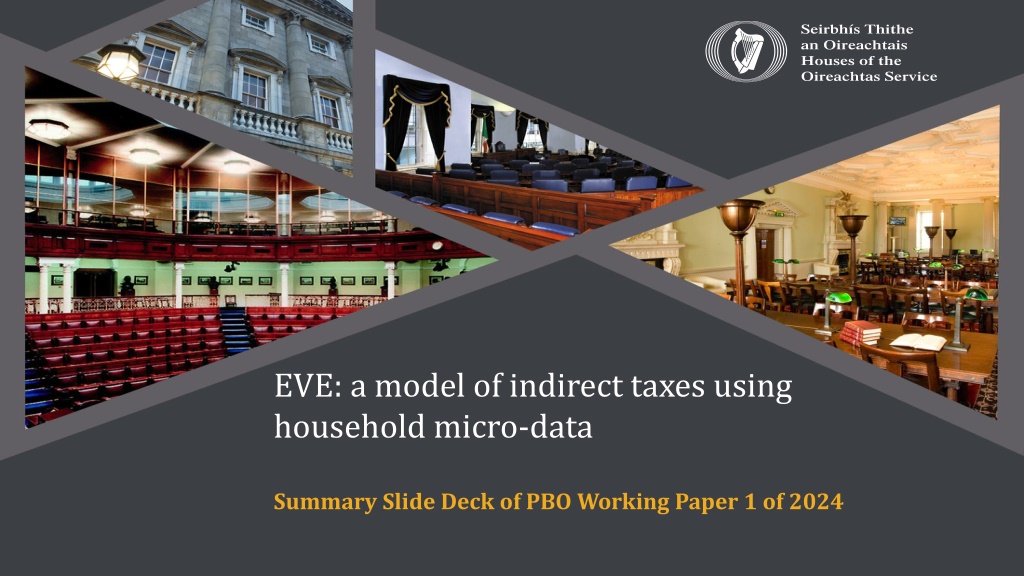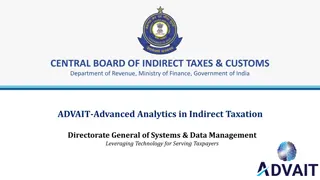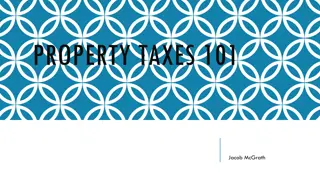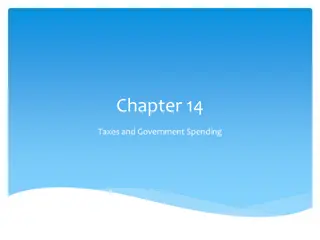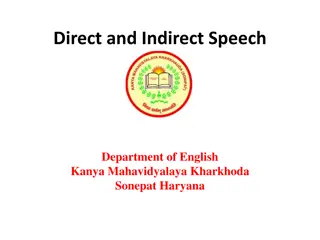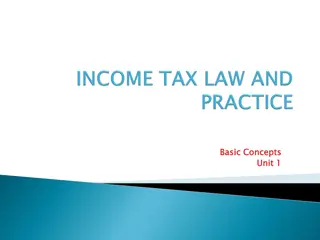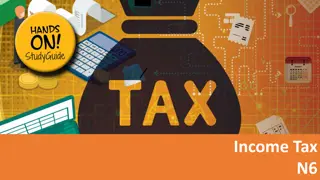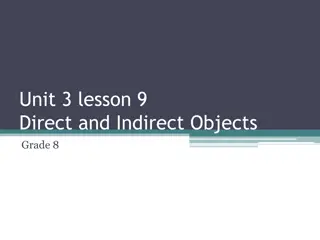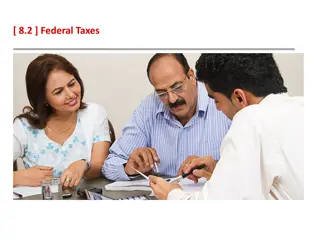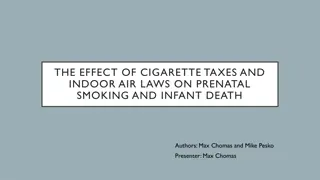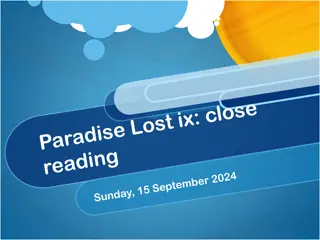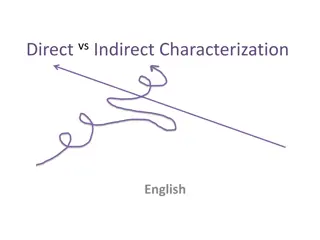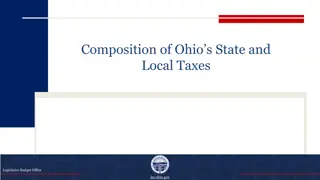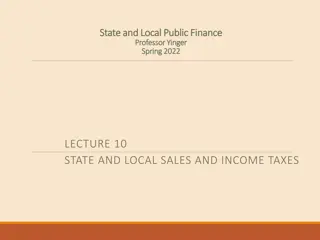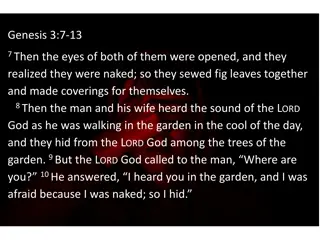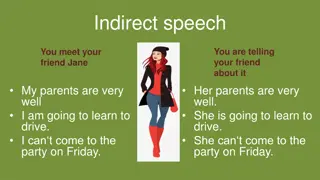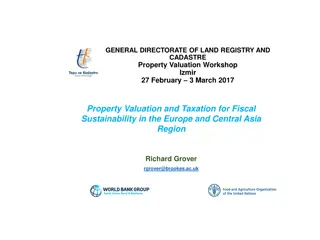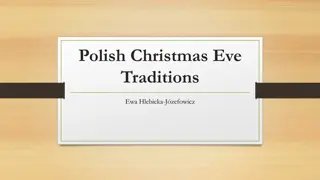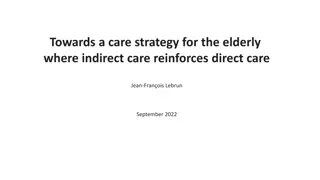Understanding EVE Model for Indirect Taxes Using Household Data
The EVE model developed by PBO analyzes household expenditure to estimate taxes paid on goods and services, facilitating the assessment of policy proposals' cost and impact. Utilizing microsimulation, EVE covers a range of indirect taxes like VAT, excises, and carbon tax, providing valuable insights into tax distribution and effects on households based on expenditure data. The model utilizes the Household Budget Survey data and updates it to be more timely, ensuring accuracy in reflecting consumption patterns and price changes.
Download Presentation

Please find below an Image/Link to download the presentation.
The content on the website is provided AS IS for your information and personal use only. It may not be sold, licensed, or shared on other websites without obtaining consent from the author. Download presentation by click this link. If you encounter any issues during the download, it is possible that the publisher has removed the file from their server.
E N D
Presentation Transcript
EVE: a model of indirect taxes using household micro-data Summary Slide Deck of PBO Working Paper 1 of 2024
Expenditure, VAT and Excise (EVE) Model The PBO has developed an indirect tax microsimulation model- the EVE model EVE analyses household expenditure and estimates the taxes they pay on goods and services they purchase We then model how changes to indirect taxes would affect households and the fiscal cost involved EVE is a powerful tool to aid Members of the Oireachtas in understanding the cost and distributional impact of policy proposals Contact pbo@oireachtas.ie or pbocostings@oireachtas.ie (if related to requests for the PBO s policy costing service) for more details 2
What can EVE do? Tax Header Excises Mineral Oil Tax Sub-components modelled Costings Impact Analysis Light Oil (Petrol), Heavy Oil (Diesel), Fuel Oil (Home-heating oil) Urban-rural, household income, household type Alcohol Products Tax Beer (>2.8%), Wine (Still >5.5%, Still >15% & sparkling >5.5%), Spirits, Cider & Perry (>2.8% and <6.6%) Cigarettes (per thousand & ad valorem), Cigars, Fine-cut tobacco Urban-rural, household income, household type Tobacco Products Tax Urban-rural, household income, household type Carbon Tax Petrol, Diesel, Kerosene, LPG, Solid Fuels (Coal & Peat), Natural Gas Urban-rural, household income, household type VAT Domestic household sector (4 VAT rates & >500 expenditure items) Urban-rural, household income, household type 3
Data The Household Budget Survey (2015/2016) contains detailed expenditure data Households (n=6,839) keep detailed expenditure diaries for two weeks Data biased towards non-durable consumption Over 500 expenditure item categories: 237 food items, 22 alcohol/tobacco, 18 clothing & footwear, 4 fuel & light, 24 housing, 10 household non-durables, 46 household durable, 37 transport, 115 miscellaneous goods & services 4
Making the data more timely 1. Initially, assume basket of goods/services consumed in 2023 is the same as in the 2015/2016 data 2. Uprate by real per capita consumption growth (+14.7%) Larger basket, consume proportionally more of every good/service Scalar, doesn t affect the shareof expenditure on different goods/services 3. Uprate by price growth: need to spend more money to afford the initial basket Prices have grown differentially, affects expenditure shares e.g. overall CPI: +17.6% compared to gas +150% Uprate prices at the commodity level for most non-durable items e.g., meat, milk, etc. 5
Expenditure levels & shares A. Mean expenditure, nominal per week B. Mean expenditure shares Mean household expenditure increases from 837 per week to 1,169 per week (+40%) Fuel & Light increases as a share of expenditure, reflecting rapid inflation in energy Adjustments made for the under-reporting of Alcohol & Tobacco 6
EVE replicates outturn data well Item Modelled (2023) million Revenue (2022/2021) million Excises Beer Wine Cider Spirits Diesel Petrol Tobacco Cigarettes Carbon Tax VAT (Household Sector) *~43% of diesel used in transport attributable to private care usage- SEAI Energy Balance Accounts 2019 **Revenue 2022 figure with relativities from European Commission VAT Gap 2022 for VAT origin in 2019 390 326 52 310 605 473 173 1,284 560 9,231 392 375 52 411 1,430* 445 181 1,137 563 9,776** 7
Application: carbon tax increase from 48.50 to 100/tonne To show what the EVE model can do, we simulate the effect of scheduled carbon tax increases Carbon tax set to rise by 7.50 per annum in order to tax carbon at 100/tonne by 2030 Simulate an increase in the carbon tax from 48.5/tonne to 100/tonne using EVE Demand for energy (level and composition) held at 2023 levels No behavioural response considered No wider macroeconomic effects considered Estimate how this carbon tax increase would affect urban and rural households EVE also accounts for the VAT implications of a carbon tax increase 11
Rural households most affected by this carbon tax increase 12
with low-income households seeing their resources stretched 13
Revenue recycling of carbon tax yields Since Budget 2020, yields from increases to the carbon tax have been allocated to the Carbon Tax Fund A portion of these revenues are recycled directly to households to offset the known regressivity of carbon tax increases In Budget 2024, these measures were via the social welfare system: 1. A 4 per week increase to Increase Qualified Child Payments 2. A 54 increase to the weekly income limits for the Working Family Payment We analyze how the above measures affect households while accounting for the impact of a 7.50 increase to the carbon tax Results indicate that revenue recycling is progressive, but concentrated, with large gains for low-income couples with children and lone parents, but less for other groups 14
In Budget 2024, on average, recycling more than compensates for the carbon tax increase, with low-income households better off 15
however, many households didnt receive any of the recycled revenues due to recycling occurring through a pair of policies 16
Conclusions EVE model a powerful tool for analysing costs and distributional effects of indirect taxes For more information, contact pbo@oireachtas.ie or pbocostings@oireachtas.ie (if related to requests for policy costing analysis for Members) Future work at the PBO will aim to model behavioural response within EVE 17
Appendix 18
Excises in the model Table 1: Excise parameters, modelled 2023 scenario Tax Heading Alcohol Product Tax Spirits Beer/Stout/Ale/Lager (>2.8% ABV) Cider (>2.8% & <6% ABV) Wine (Still, >5% & <15% ABV) Fortified Wine (Still, >15% ABV) Sparkling Wine (>5.5% ABV) Tobacco Product Tax Cigarettes + Cigarettes (Ad Valorem) Cigars Fine-cut tobacco Mineral Oil Tax Petrol Diesel Home heating oil Carbon Tax Petrol, Diesel, LPG, Natural Gas, Kerosene, Coal & Peat Briquettes Tax Rate 42.57 per litre of alcohol 22.5 per hectolitre per cent alcohol of beer 94.46 per hectolitre of wine 424.84 per hectolitre of wine 616.45 per hectolitre of wine 849.68 per hectolitre of wine 403.32 per 1,000 cigarettes Ad valorem charge of 8.73% 454.071 per kilogram 436.842 per kilogram 541.84 per 1,000 litres 425.72 per 1,000 litres 14.78 per 1,000 litres 48.50 per tonne of carbon 19
